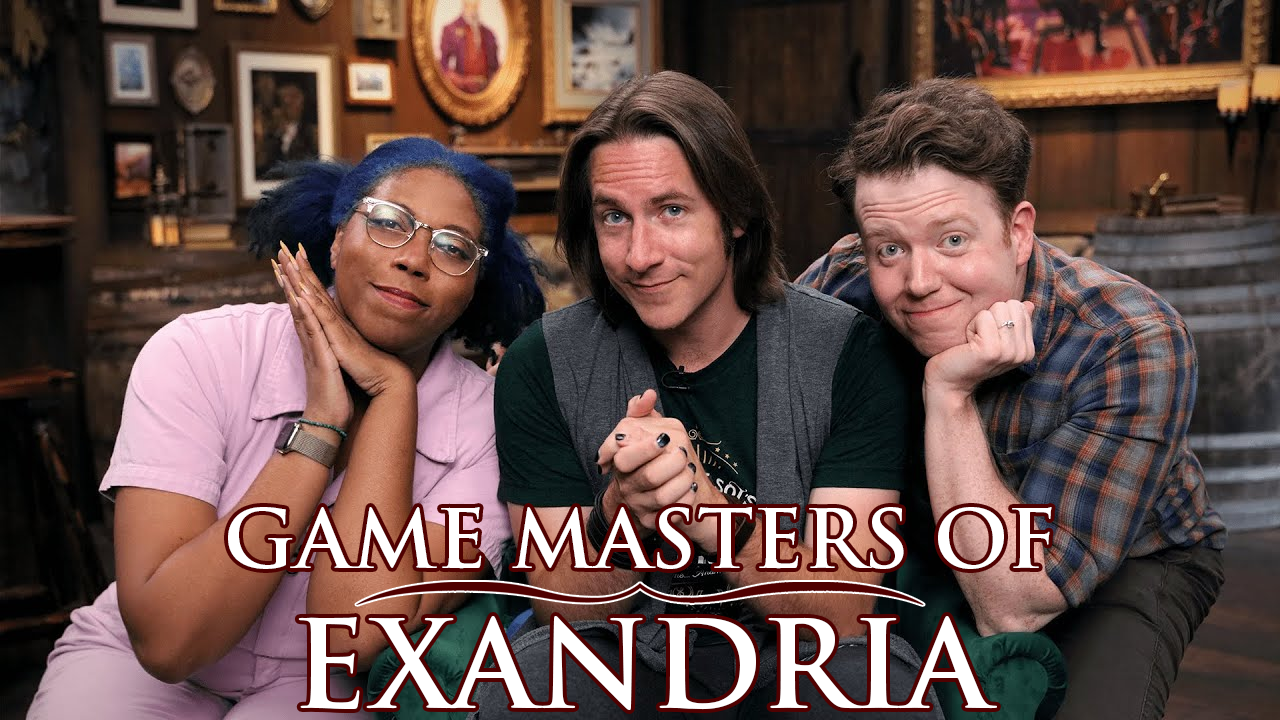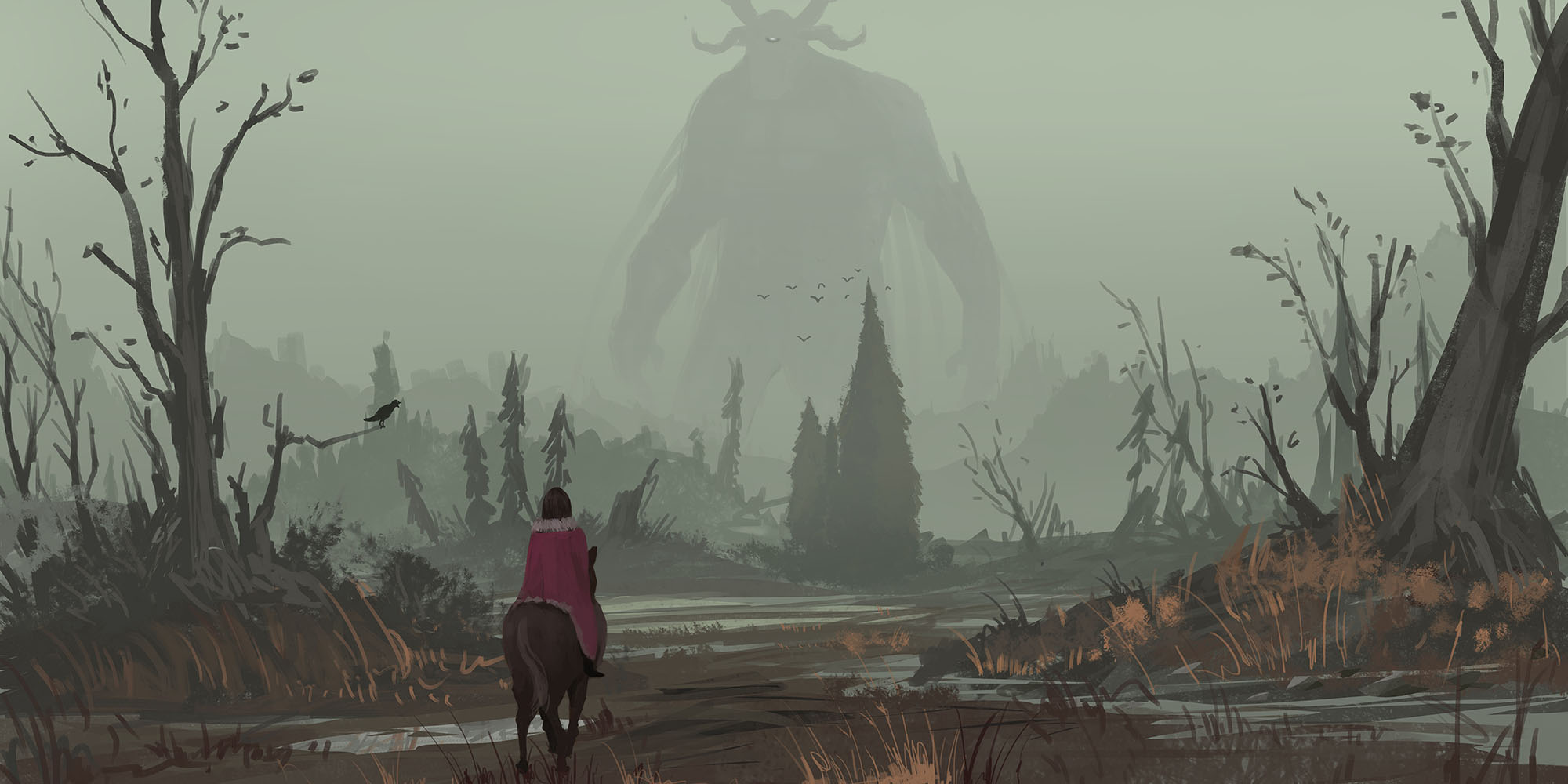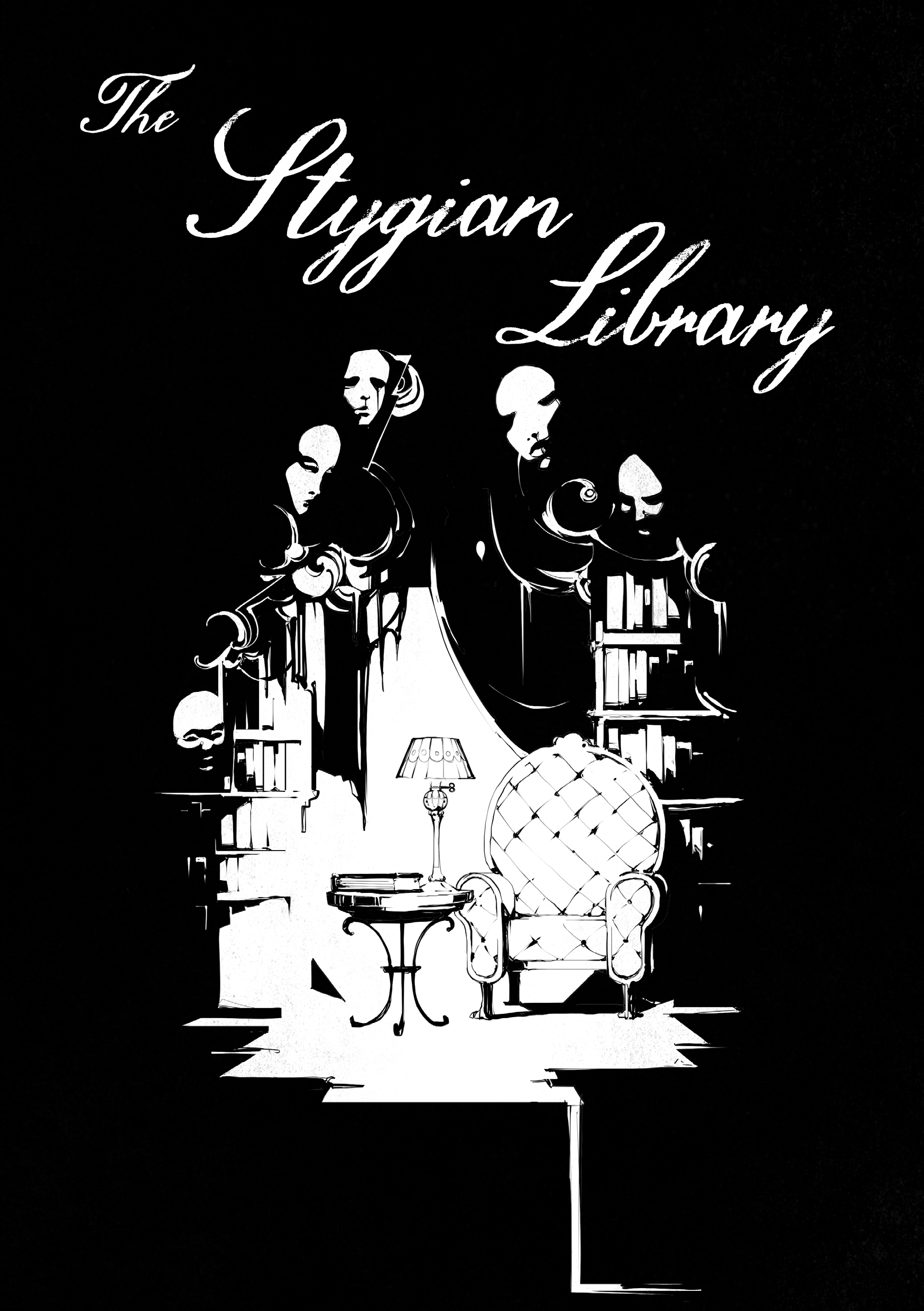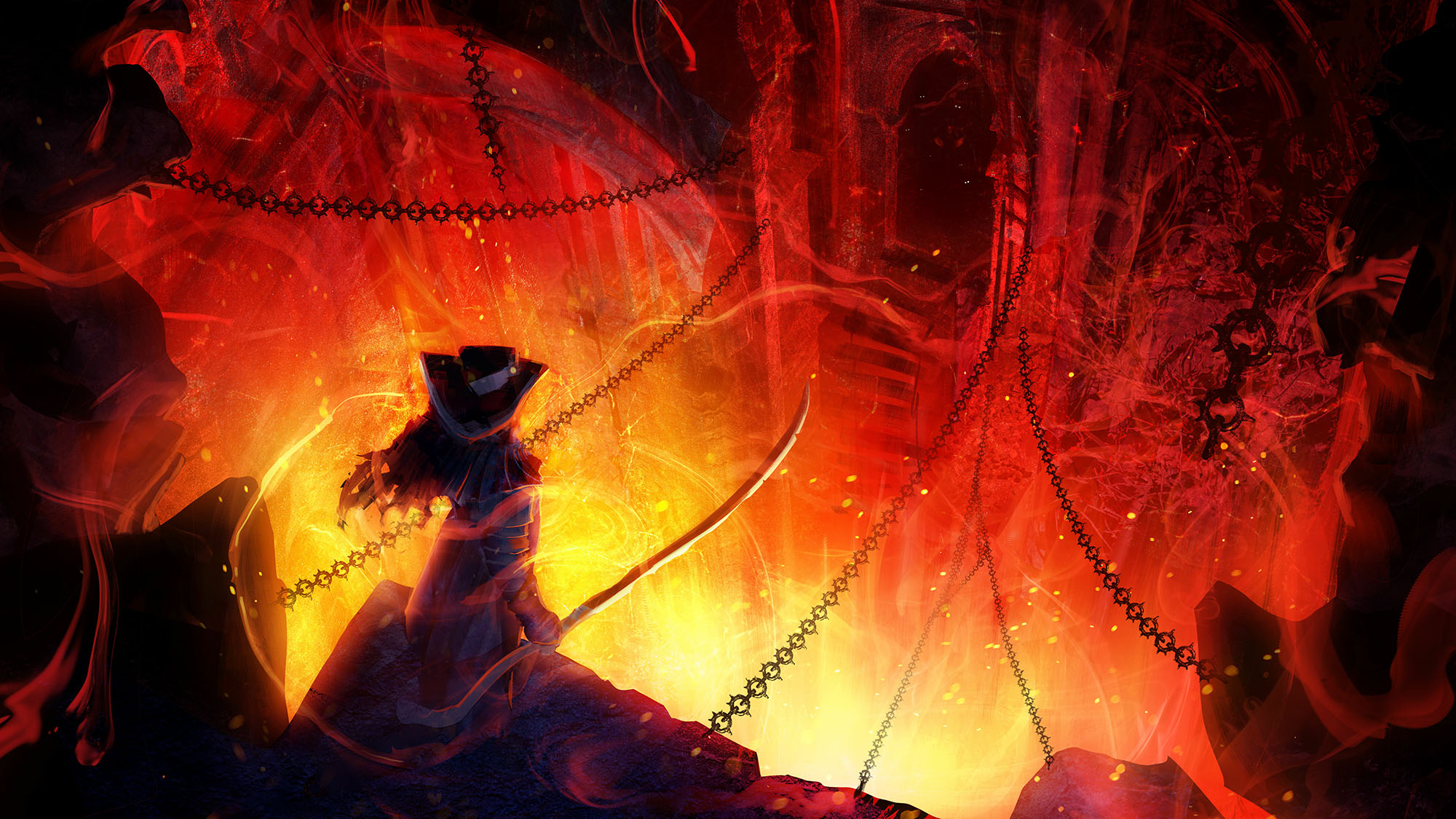With a fully stocked rumor table ready to go, it’s time to deliver your rumors to the PCs. Broadly speaking, there are three approaches to doing this (and you’ll probably want to use all three): proactive, reactive, and opportunistic.
Playtest Tip: No matter how they actually get a rumor, you can have the players roll for their rumor! It’s a fun way for them to feel involved in the process and can increase their sense of “ownership” over the rumor they get.
PROACTIVE
Proactive methods sort of “push” rumors on the PCs without the players taking any specific action to acquire them.
INTERVAL TRIGGER: At some regular interval, the PCs pick up new rumors. This might be once per week, at the end of each adventure, once per downtime, or any such trigger.
ACTION/LOCATION TRIGGERS: You might also trigger rumor delivery based on actions the PCs take which are not, explicitly, looking for rumors. For example, they might get new rumors each time they return to town or visit a new town. Or perhaps taking any non-solitary downtime action triggers rumor acquisition.
In City-State of the Invincible Overlord, individual city buildings would be keyed with specific rumors (which would be delivered when the PCs visited those locations). That feels like low-value prep to me, but it could perhaps be used to good effect as a spice.
CHARACTER CREATION: It’s a very good idea to give any brand new character one or more rumors to kick things off. Before play even begins, these rumors will give them the knowledge to start setting goals and making navigational decisions.
RUMOR CHECK: At any point where you have a proactive rumor trigger, you can make a rumor check instead of automatically granting rumors. You’ll also want to decide if it’s possible to gain multiple rumors at the same time, and whether rumors are gained individually or by the whole group.
For example, in my last open table hexcrawl campaign, every new character would get 1d4 rumors (the stuff they’d heard before the player started playing them) and I would make a 1 in 6 rumor check for each PC at the beginning of each session (representing stuff they’d heard around town since the last time we’d seen them in play).
REACTIVE
As the players learn how useful rumors can be, they’re likely to start actively seeking them out. They may also go looking for other types of information without specifically thinking in terms of “rumors,” but which nevertheless can feed rumors to them.
INVESTIGATIVE ACTION: The investigation action is part of the urbancrawl scenario structure, but this covers any effort by the PCs to deliberately canvass a community for information. This effort might require a Charisma (Investigation) or similar check, with the number of rumors gleaned being determined by the relative success of the check.
TAVERN TALK: Buying a round of drinks and plying others over a cup of grog in the common room of a tavern is another common shorthand for gathering rumors.
BROADSHEETS & BULLETIN BOARDS: Broadsheets (the antecedents of newspapers) and bulletin board notices are formal packaging of “rumors,” allowing the PCs to periodically check in and receive a fresh packet of information. (You can imagine any number of similar packages, ranging from town criers to magic mirrors murmuring cryptic prophecies.) The content of each package (broadsheet headlines, job offers on the bulletin board, etc.) can be bespoke creations, but it’s just as easy to roll them up randomly from your rumor table.
RESEARCH: Delving into the tomes of the local library or digging through the musty scrolls of the official chronicles may not turn up any rumors dealing with purely current events, but there are any number of rumors that can nevertheless be delivered through PC research (e.g., the trade in wyvern eggs a generation back).
ADDING COST: Regardless of the precise method pursued by the PCs, you might consider attaching a cost to it (for buying a round of drinks, well-placed bribes, access fees at the university library, etc.). I’d recommend against making this a particularly large fee, since obviously you don’t want to discourage players from pursuing rumors. Something like 1d6 gp is quite reasonable.
Another option is to make the fee optional, but have it grant a bonus to the PCs’ skill check (making success more likely or improving the quality or number of rumors gained). In this case, since it’s not essential, you can elect to make the cost more substantial.
Once a cost, optional or otherwise, has been attached to rumor-gathering, one cool thing you can do is add this cost to the equipment list for your campaign: Now every new player rolling up a character and every returning player looking to resupply for their next expedition will have an in-their-face reminder that hunting for rumors is something they can do.
OPPORTUNISTIC
Because the whole point of the rumor table is to impart information to the players, you should seize opportunities during play that you can use to leverage your rumor table. For example:
- During any broad social interaction (e.g., the players say “we spend the evening drinking at the tavern”) you might mention one or two interesting things they pick up in the general conversation.
- During specific interactions with NPCs, the rumor table can be used to generate topics of conversation.
- NPCs might be specifically questioned or interrogated about the area.
In practice, the rumor table can be an incredibly versatile tool, and whenever a dollop of information would be useful or provide a bit of spice, you can simply roll or select an appropriate rumor for the situation.
CONTEXTUALIZING RUMORS
When giving a rumor to a player, you can simply drop it in their lap: “You’ve head that a wyvern has been attacking travelers along the Southway.” It works. There’s nothing wrong with it. In fact, it may often be the best way to present a particular rumor. (For example, when I’m handing out rumors to newly created characters at my open table, I don’t feel a need to get fancy about it: Here’s the stuff you know. If you’d like, maybe you could tell me how you know it.)
Frequently, however, you’ll find it more effective to contextualize the rumor – to explain exactly how they came by the information and perhaps even give them the opportunity to play through it. This is when you frame up a scene at the local tavern where the PCs have noticed a young man with a freshly bandaged wound on his shoulder. Now they can strike up a conversation with him, learn his name, and hear from his own lips the tale of how the wyvern attacked his caravan and carried away his sister. They can see the haunted look in his eyes as he describes how her screams still echo in his ears.
Now those wyvern attacks have been given a face.
If you want a more detailed breakdown of how to contextualize this sort of thing, check out Rulings in Practice: Gathering Information. But the short version is:
- Summarize how they’re looking for information.
- Frame the key moment where they’re actually receiving the information. (This may include playing out a short scene, but it may not.)
- Contextualize the information, taking cues from the situation, characters, etc. to provide a specific slant or POV on the rumor.
If you’re uncertain how the PCs might have found the information, ask the players what they’re looking for then. See what they throw at you and then play it forward. Or here’s a short list of options:
- Talking in a tavern. (Is it a quiet conversation? Or do they hear someone boisterously boasting at the next table?)
- Saw the information posted somewhere (a wanted poster, a bulletin board, etc.).
- Chatting with a friend. (Which friend? Ask the player if you don’t know.)
- Performing research. (Where?)
- A letter. (From who?)
- A tarot reading, fortune telling, or divine vision.
OPEN TABLE RUMOR POOL
Here’s a fun technique that seems to work best with an open table, but can also be adapted for a dedicated campaign: When a PC gains access to a rumor, it gets added to the open table rumor pool. This list of rumors can be posted in the group’s Discord, put on a wiki, periodically updated by e-mail, or whatever other method of coordination your group is using.
When a rumor is resolved (e.g., the wyvern is slain), reward Inspiration. You can limit this to just the group who resolved the rumor, but it may be even more effective to award it to every single PC in the campaign. This heightens the sense of community in the open table, and can also motivate people to get back to the gaming table ASAP. (Since otherwise their Inspiration will be “wasted” if someone resolves another rumor before they can use it.)
You can also leave the decision of whether to share a rumor with the open table rumor pool up to the individual players: Doing so gives them the opportunity to benefit if someone else can capitalize on the information, but keeping a rumor secret might be desirable if they specifically want to exploit it for their own gain.
MODERATE YOUR RUMORMONGERING
Rumors are good.
Too many rumors, however, will overload your players. They just turn into meaningless noise, and the players will just tune them all out. So, paradoxically, too many rumors can end up being functionally identical to no rumors at all.
In short, to achieve maximum effect with your rumors, you want to limit how many of them you’re handing out.
How many? Well, this depends on the players. I’ve had some players who keep meticulous notes and will have a couple dozen rumors scrupulously listed (and even carefully cross-referenced to their maps!). I’ve had other players who get a third rumor and basically say, “Fuck this noise.” So this is really something you have to play by ear and be willing to adjust on-the-fly.
The key thing to moderate, though, are your proactive rumors: Opportunistic stuff tends to be linked to specific interactions which makes it more significant. And reactive stuff, obviously, is happening at the players’ own request, and so is naturally not overburdening them.
In many ways, though, this is ideal in any case: You really just want a smattering of proactive stuff to (a) help players who would otherwise be lost and (b) remind players that rumors exist, prompting them to do their own legwork to dig up more information on their own recognizance (and to whatever amount they want).
With that being said, you may also want to limit the group’s ability to systematically drain all the available rumors out of the campaign. You might want to, for example, limit them to 1d4 rumors per downtime or per session. Alternatively, perhaps villages are limited to 1 rumor, towns to 1d4 rumors, and metropolises to 2d6 rumors (1d4 of which require special effort). This structure can actually be used to motivate the PCs to explore more: You want more information? You’ll have to go to the big city.

















